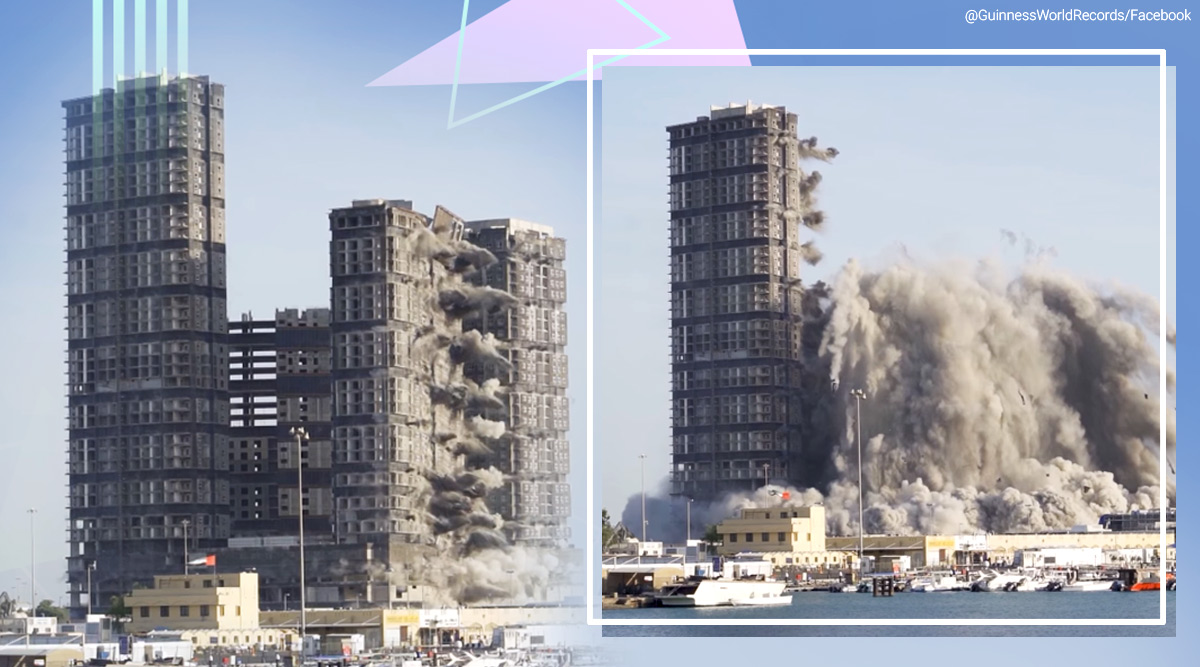Oh, you wish I'd stop commenting. I'm your worst nightmare -- someone who looks at the actual facts.BeNotDeceived wrote: ↑Wed Feb 02, 2022 11:26 pmRes Ipsa wrote: ↑Wed Feb 02, 2022 9:55 pmBND,
1. If you know the policy had a “terrorism cause,” you must have read the policy language somewhere. Please supply a link to where you read it. Also, the property was worth 7 billion but the limits were only 3.5 billion. That’s only half of the building’s value. If this was all a scheme, why not get limits equal to the value of the buildings? You can always insure property for what it’s worth. For such a meticulously planned conspiracy, under insuring the property is a pretty moronic mistake. Finally, how do you know where the money actually went? The Port Authority owned the buildings. Did they get any of the proceeds? Lenders? Any party with a financial interest in the property is usually protected under a property policy.
2. Yes, the Port Authority sold Silverstein a 99 year lease. Whatever alternatives it has explored before became moot when it opted to lease the buildings:
3. You never read Jones’ paper did you? It specifically said they could not identify the chips as nano thermite. The paper said more study would be needed. Crickets.
4. Exactly right. There it’s nothing to see there. The owner of the buildings and the leaseholder split $4.5 billion dollars in payment for a 7 billion dollar loss! If you think that’s a windfall, you might want to consult a financial advisor.
The WTC complex is only worth $2.3 billion today, back in 2001, it was worth about $990 million. Where on earth are you getting the $11.5 billion for a $7 billion loss??.Yep, never read Dr. Jones' paper where nano-thermate is identified as the incendiary for the destruction of the towers.
Please stop commenting in this thread, you are clearly clueless.
You've described what happened as Silverstein paid $14 million and pocketed $4.5 billion. Which means you have no idea how to value a real estate transaction. You really should get that financial advisor.
Because the Port Authority is a government agency, it put the 99 year lease up for competitive bid. Thirty different companies competed for the lease. The Port Authority narrowed the field to three finalists. Silverstein's bid was only the second highest. But the high bidder and the Port Authority weren't able to finalize a deal, so the bid was awarded to Silverstein, which leased the commercial space and Westfield, which leased the retail space. Silverman's lease was for the Twin Towers and buildings 4 and 5. The lease required a down payment of $616 million followed by payment of $120 million a year for 99 years. https://www.nytimes.com/2001/04/27/nyre ... enter.html; https://www.law.nyu.edu/news/SILVERSTEIN_REBUILD_WTC By discounting the annual payments over time, the price was valued at $3.2 billion.
Silverman did put up $14 million dollars of his own money, but where did he get the other $602 million? Lenders. And he would have to pay interest on that loan. So, on 9/12, Silverman was out of pocket $14 million, owed a smidge over $600 million on bank loans, and was obligated to pay $10 million every month and all he had to show for it was a smoking hole in the ground. Not only that, his release required him to repair or rebuild damage to the buildings. So, he was out $3.2 billion and he had to rebuild the four buildings, and the only source of funds was the insurance.
So far, a big deal has been made over whether one limit was available or two. But the limit just sets the maximum amount that the insurers owed. Far more important was the valuation of the loss, which hasn't been talked about at all. Litigation over the insurance went on for years. I haven't been able to determine exactly when Silverman received any payment from the insurers, but the amount that was owed was turned over to an appraisal panel. The court would decide what the policy legally required, and the panel would value the loss. Both the appraisal process and coverage litigation continued right up until a final settlement was reached in XXX.
The policies valued the loss based on replacement cost. In court, the insurers argued that all they had to pay for was the cost to rebuild the structures as they had existed at the time of the loss, using the same materials or the closest material currently available. Silverstein argued that replacement cost should be the cost of what it would take to build a functional equivalent today, taking into account that no sane developer would rebuild the twin towers as they were originally constructed. Because the functional equivalent built using today's standards would be much more expensive, the recovery would have been much larger -- perhaps the full $7 billion. Regardless, the policies would only pay replacement cost if Silverstein actually spent the money replacing the buildings. Otherwise, he'd have to settle for the market value of the buildings, which he'd pretty much set a couple of months before when he bought them. There is no scenario under which Silverman would get to pocket a cool $ 7 billion and walk away. At best, a walkaway would get him a loss.
Silverman lost. The amount of loss would be measured by what it would cost to replace what was there when the planes hit the towers. In a paper written to help determine the cost of 9/11 to the insurance industry, the cost to replace or repair all WTC buildings (except 7, which Silverman owned and would have been insured under different policies) was estimated at $ 6.4 billion, which included buildings 3 and 6, which were not leased by Silverman.
The replacement cost issue is largely what led Silverman to settle for roughly 4.55 billion -- far less than the $ 7 billion limits. And he still had to repay his lenders (they get first crack at the insurance payout) and the $10 million per month. And the Port Authority claimed that it was entitled to at least some of the money. That, plus disagreements between Silverman and the Port Authority led to a settlement in 2006, in which the Port Authority took back 1 and 7 WTC in exchange for Silverstein getting additional financing to build buildings 2-6. https://en.wikipedia.org/wiki/World_Tra ... 1–present)
In 2003, long before construction was even started, the NYT reported that the estimated cost to build the new World Trade Center complex was $ 10 billion, or perhaps higher. Even leaving out the two smaller buildings that Silverstein didn't lease, that $4.55 billion isn't looking like much of a windfall. the Port Authority and Silverstein continued to battle over the buildings that Silverstein planned to build. In 2012, construction on WTC 4 was halted indefinitely.
According to the wiki, the status of Silverman's building's at the site as of last September is:
WTC 2 -- construction suspended, no projected completion date; estimated cost in 2015 $4 billion.
WTC 3 -- Completed in 2018 Construction cost estimated at $2.7 billion. https://www.globest.com/2018/06/12/3-wo ... 0103004914
WTC 4 -- Completed in 2013 Construction cost estimated at $ 1.6 billion https://www.globest.com/2018/06/12/3-wo ... 0103004914
WTC 5 -- Approved, expected completion date 2028
Worst get rich quick scheme ever.
So, how about you copying that "thermate" conclusion from Jones's paper? Or should Doc just add it to his list now?






